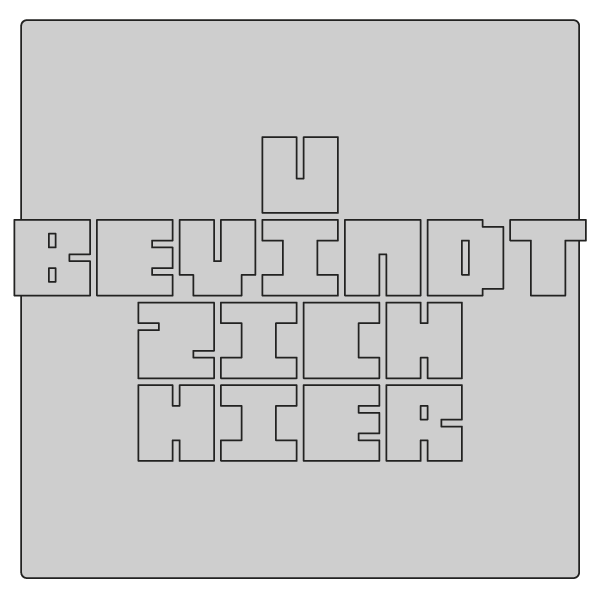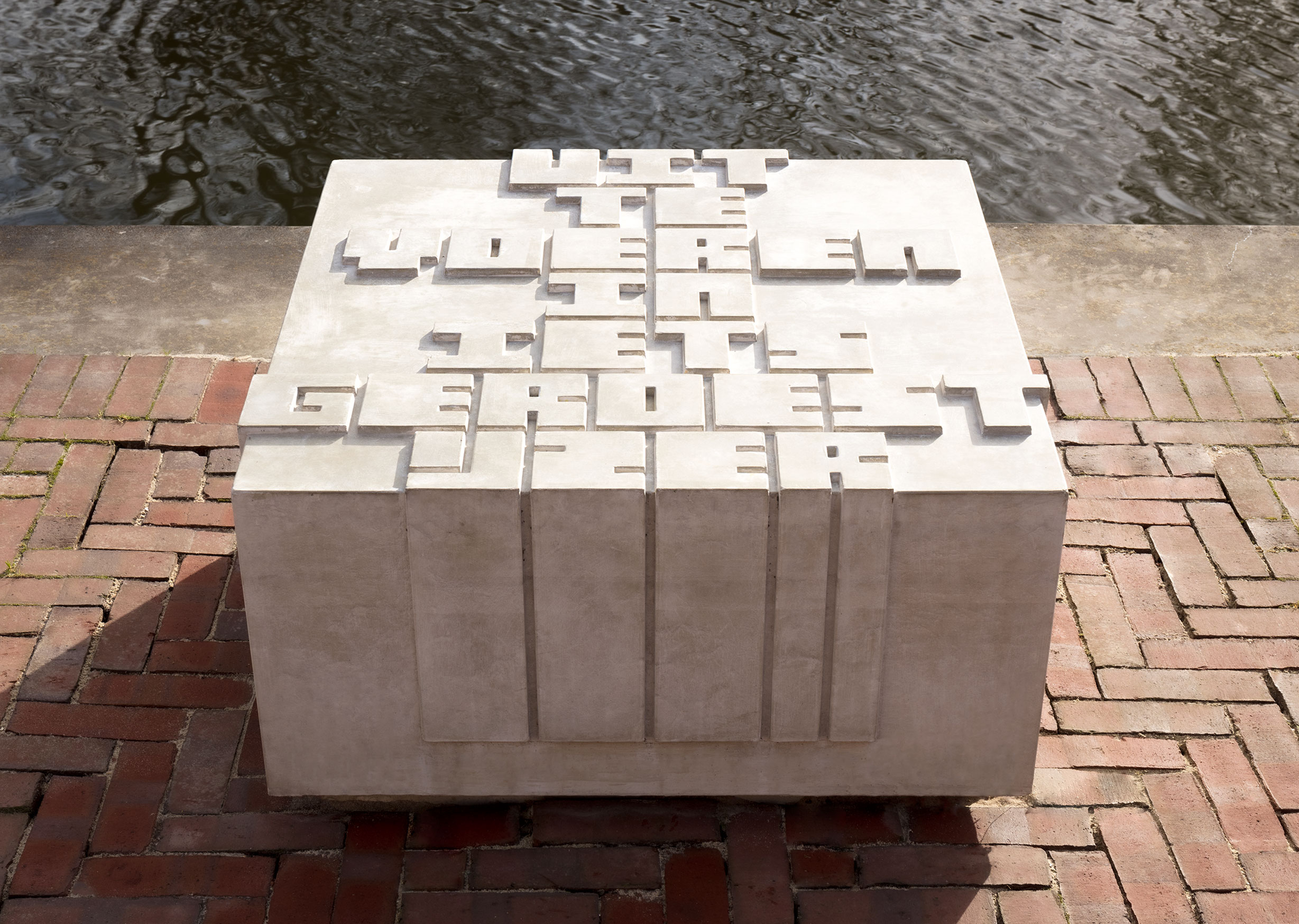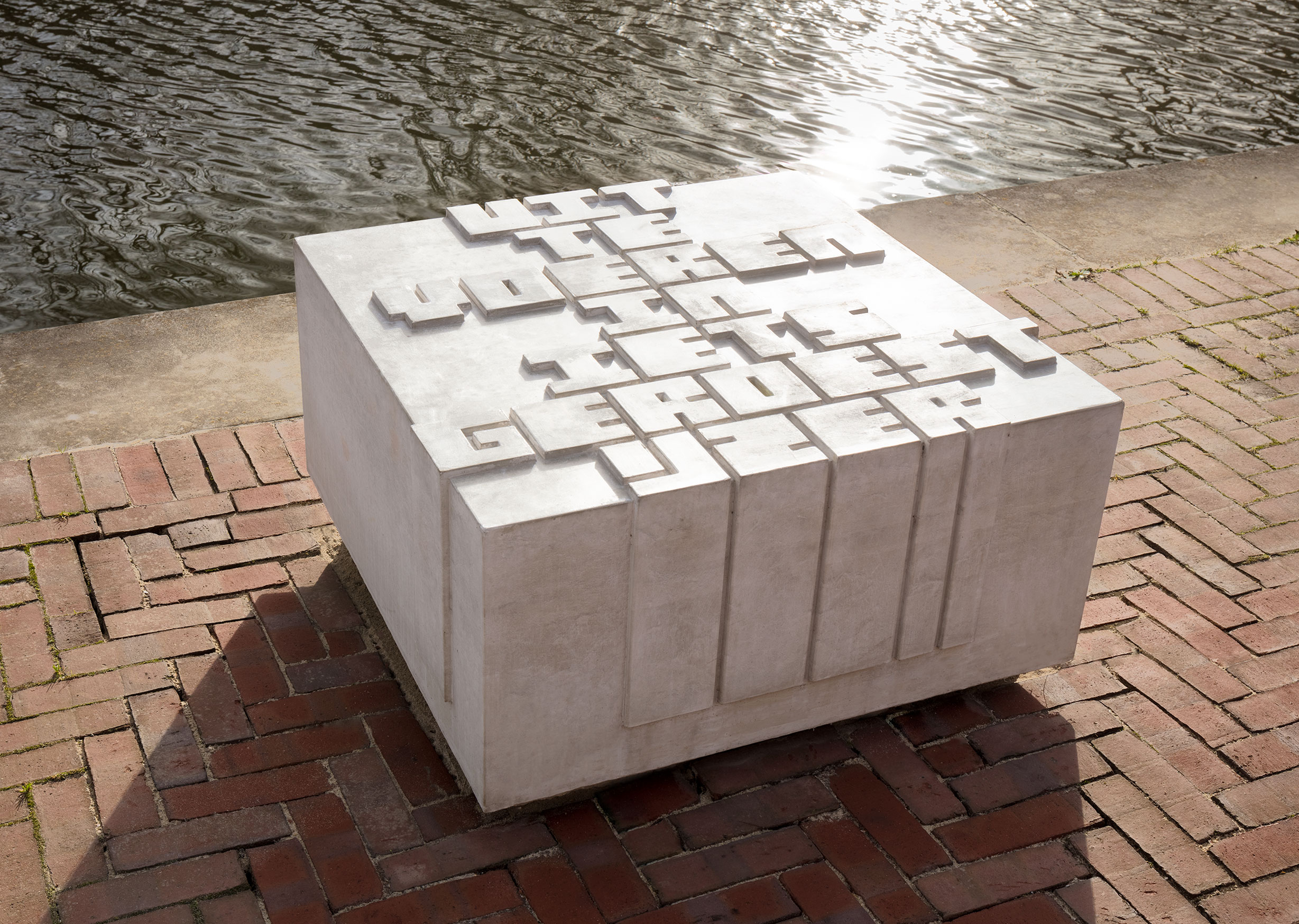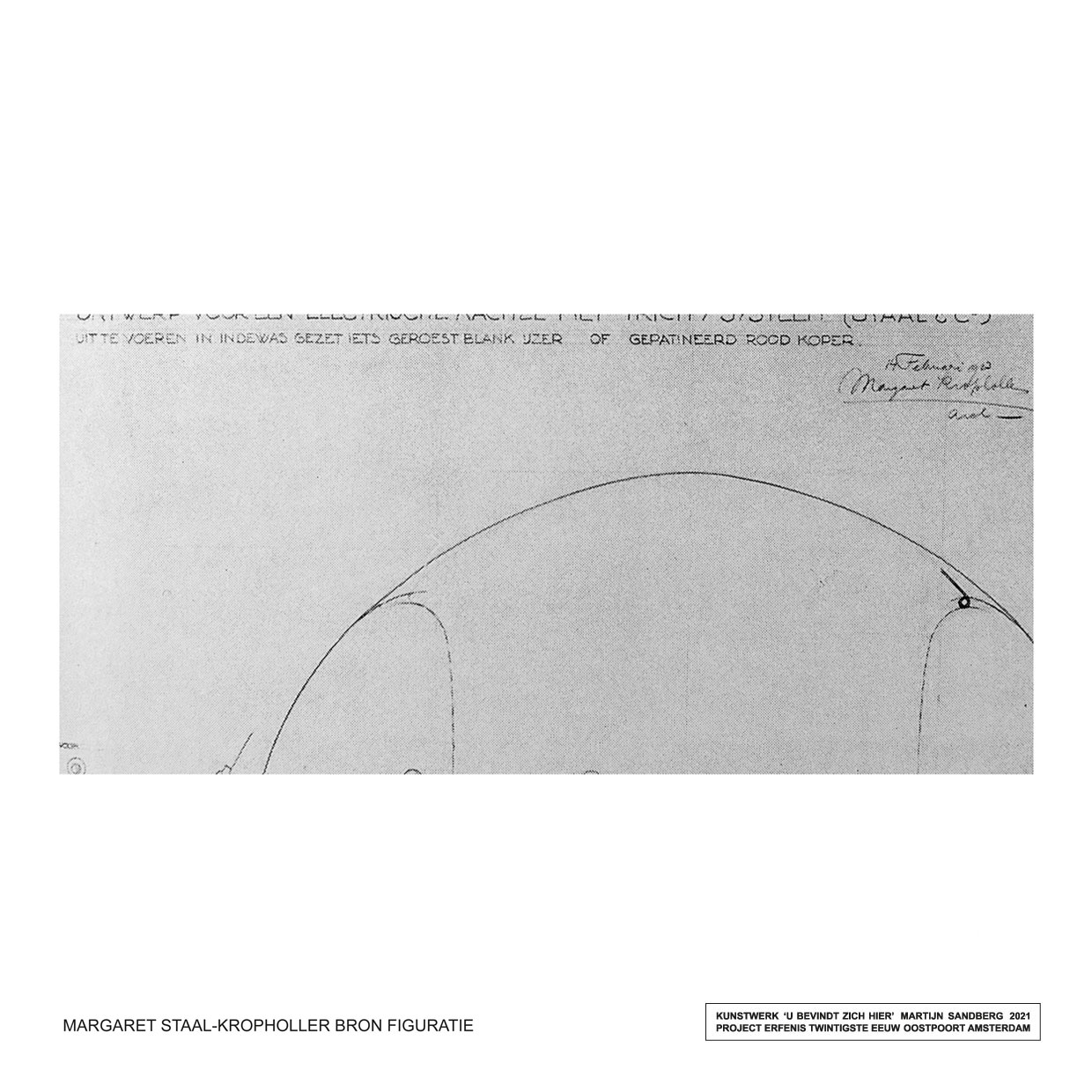To be executed in slightly corroded iron
The column figuration for architect Margaret Staal-Kropholler (1891-1966) is based on a text she wrote as an explanatory note upon one of her design drawings in 1923. The original text is: ‘to be executed in slightly corroded plain crude iron or patinated red copper set in wax’. I have compiled the figuration for the column from this: ‘to be executed in slightly corroded iron’.
I have chosen this sentence for artistic reasons, not only because it may be deemed appropriate to the column and the person, it can also be read in various ways.
The figuration engages in a playful connection with the concrete artwork. There is a ‘contradiction’, ‘a difference’ between the material explicitly mentioned on the column, and the material of the column itself. Image and image carrier contradict each other as it were. Or does this herald a work still to be created? Is the text perhaps an instruction for an artwork in the public space, ‘to be executed in slightly corroded iron’?
The word ‘iron’ is associated with ‘metal’ and ‘steel’. Steel is an alloy consisting of iron and carbon. So there is also – indirectly or directly – an analogy between the word ‘iron’ on the column and the name the column refers to: Margaret Staal-Kropholler.
Furthermore, the column content with figuration links up to the column series and the statement relates to other aphorisms from the artwork ‘You Are Here’, covering themes from the legacy of the twentieth century. The position chosen for the column also takes care of a sequence of aphorisms, supplementing each other – in the reading and walking direction from left to right along the waterside, and in the opposite direction from right to left: ‘The day is short the work long, ‘To be executed in slightly corroded iron’, ‘Make art of life’.
MS
Biography
Margaret Staal-Kropholler (1891-1966) is regarded as the first professionally practicing female architect in The Netherlands. She focused on architecture and interior design.
Particular highlights of her oeuvre are her designs in the Amsterdam School style, such as the villas in Park Meerwijk, Bergen (1917), the studio dwelling for the poet R. Roland Holst, Zundert (1918-1919), the housing complex in the Holendrechtstraat in Amsterdam-South (1922) and the Orteliusstraat housing complex in Amsterdam-West (1925).
Her social involvement was also a feature of her style and vision. In the Sixties, her final work was the Louise Went apartment block (1963) for single working women in Amsterdam-East by the Amstel station. Hiring or buying their own house was not possible for single women until long after the War, so they had to resort to special projects. The building became student housing in 2009. Fifty years after completion the building was renovated in 2013 and this date has been included in the façade.
Artwork: You Are Here
Artist: Martijn Sandberg
Material: concrete
Measurements: (lxwxh) 80cm x 80cm x 40cm
Project: Legacy of the Twentieth Century
Realisation and completion: 2019
Location: Oranje Vrijstaatkade, Oostpoort, Amsterdam
Commissioned by: Amsterdam Municipality, District Oost



